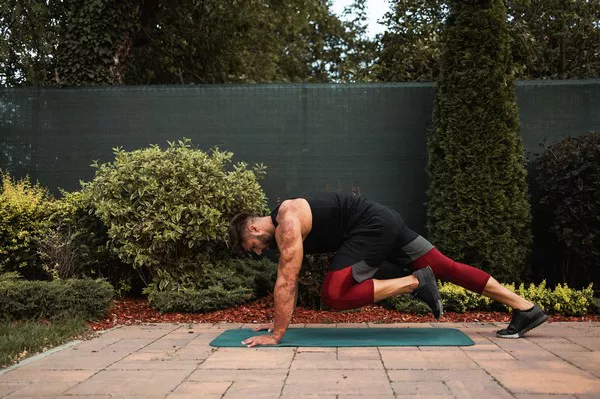Pimple marks, often referred to as post-inflammatory hyperpigmentation (PIH), can be a persistent cosmetic concern for many individuals, impacting self-confidence and self-esteem. These marks result from the skin’s natural healing process after a pimple or acne breakout. While they may fade over time, they can also linger for months or even years. Fortunately, advancements in dermatological research have led to a variety of solutions that can effectively address and reduce the appearance of pimple marks. In this article, we will explore the best solutions for pimple marks, providing valuable insights into achieving clearer, more even-toned skin.
[inline_related_posts title=”SEE ALSO” title_align=”left” style=”list” number=”3″ align=”none” ids=”1502,1438,1081″ by=”categories” orderby=”rand” order=”DESC” hide_thumb=”no” thumb_right=”no” views=”no” date=”yes” grid_columns=”1″ post_type=”” tax=””]
Understanding Pimple Marks
Pimple marks are a result of the skin’s response to inflammation caused by acne lesions. When a pimple forms, the skin produces excess melanin, leading to discoloration. This leaves behind flat, reddish, brown, or dark spots once the pimple heals. These marks are particularly common in individuals with darker skin tones, as their skin produces more melanin.
Best Solutions for Pimple Marks
Several best solutions are available for pimple marks:
1. Topical Treatments
Topical treatments play a crucial role in addressing pimple marks. Ingredients like retinoids, vitamin C, niacinamide, and alpha hydroxy acids (AHAs) have shown promise in promoting skin cell turnover, reducing pigmentation, and enhancing overall skin appearance. Regular application of these treatments can lead to visible improvements over time.
2. Chemical Peels
Chemical peels involve the application of a solution containing exfoliating agents such as glycolic acid, salicylic acid, or trichloroacetic acid (TCA). These peels remove the outer layer of dead skin cells, revealing fresh, new skin. They are particularly effective in reducing the appearance of pimple marks and improving skin texture.
3. Laser Therapy
Laser treatments, such as fractional laser therapy and intense pulsed light (IPL), are popular options for treating pimple marks. These procedures target the melanin in the skin, breaking down excess pigmentation and stimulating collagen production. Laser therapy offers quicker results compared to other treatments, but multiple sessions may be required.
SEE ALSO: Laser Scar Removal: The Definitive Guide to Treatment Sessions and Considerations
4. Microneedling
Microneedling involves the use of fine needles to create controlled micro-injuries in the skin. This process stimulates collagen production and enhances the skin’s natural healing process, leading to improved texture and reduced pigmentation. Combining microneedling with serums containing growth factors can enhance its efficacy.
5. Prescription Medications
In certain cases, dermatologists may prescribe prescription medications such as hydroquinone, corticosteroids, or tretinoin to target stubborn pimple marks. These medications work by suppressing melanin production and promoting skin cell turnover.
6. Combination Therapies for Optimal Results
In many cases, a combination of treatments may yield the best results for pimple mark removal. Dermatologists often tailor treatment plans to address different aspects of pigmentation and texture, combining procedures like chemical peels, laser therapy, and microneedling.
Skincare Products for Pimple Marks
Thankfully, a range of skincare products is available to help fade these scars and improve overall skin appearance. In this guide, we will delve into the recommended skincare products that can effectively aid in fading pimple marks.
1. Vitamin C Serums
Vitamin C is a powerful antioxidant that can help fade acne scars by promoting collagen synthesis and reducing pigmentation. Look for serums containing L-ascorbic acid, which is the most stable and effective form of vitamin C. These serums can help brighten the skin, even out skin tone, and improve the appearance of dark spots over time.
2. Niacinamide Serums
Niacinamide, also known as vitamin B3, is known for its ability to improve the skin’s barrier function and reduce inflammation. It can help fade acne scars by regulating excess sebum production, reducing redness, and improving skin texture. Niacinamide serums can be used alongside other treatments to enhance their efficacy.
3. Retinoid Creams or Serums
Retinoids, derivatives of vitamin A, are renowned for their ability to increase cell turnover, stimulate collagen production, and improve skin texture. Prescription-strength retinoids like tretinoin can be especially effective for fading acne scars. Over-the-counter retinol products can also yield positive results, though they may take longer to show visible improvements.
4. Alpha Hydroxy Acids (AHAs)
AHAs such as glycolic acid and lactic acid are exfoliating agents that help remove dead skin cells, revealing fresh, new skin underneath. This can aid in fading acne scars, improving skin texture, and promoting a more even skin tone. Incorporating an AHA-containing product into your routine a few times a week can gradually lead to smoother and clearer skin.
5. Beta Hydroxy Acid (BHA)
Salicylic acid, a type of BHA, is particularly effective for individuals with acne-prone skin. It penetrates the pores, exfoliating from within and helping to prevent future breakouts that can lead to new scars. Regular use of a BHA-containing product can contribute to fading existing scars and preventing new ones.
6. Hydroquinone Creams
Hydroquinone is a skin-lightening agent that can help fade dark acne scars and hyperpigmentation. It works by inhibiting melanin production in the skin. While it can be effective, it’s important to use hydroquinone products under the guidance of a dermatologist, as misuse can lead to adverse effects.
7. Scar-Specific Products
Certain products are formulated specifically to address scars, including acne scars. These products often contain a combination of ingredients such as peptides, antioxidants, and botanical extracts that support skin healing and collagen synthesis. They can be used as targeted treatments to improve the appearance of scars.
8. Sunscreen
Protecting your skin from UV radiation is crucial when dealing with acne scars. Sun exposure can worsen pigmentation and hinder the healing process. Regularly applying a broad-spectrum sunscreen with at least SPF 30 can help prevent further darkening of scars and maintain the progress made with scar-fading products.
9. Sheet Masks and Moisturizers
Hydration plays a key role in skin healing and repair. Incorporating sheet masks containing ingredients like hyaluronic acid, ceramides, and peptides can provide an extra boost of hydration to support scar fading. Additionally, a well-formulated moisturizer helps maintain the skin’s barrier and supports the healing process.
SEE ALSO: Effective Home Remedies for Fading Pimple Marks: A Comprehensive Guide
Expert Tips for Preventing Pimple Marks After Acne Breakouts
Preventing the formation of pimple marks requires a combination of effective skincare practices and careful handling of your skin during and after breakouts. Here are some expert tips to help you minimize the risk of developing pimple marks:
1. Hands Off Approach
Avoid touching, picking, or squeezing acne lesions. Picking at pimples can worsen inflammation, increase the risk of infection, and lead to scarring. The more you interfere with the healing process, the greater the likelihood of leaving behind lasting marks.
2. Gentle Cleansing
Use a mild, non-comedogenic cleanser to cleanse your face twice a day. Cleansing removes dirt, excess oil, and impurities without stripping the skin’s natural moisture barrier. Avoid using harsh scrubs or aggressive cleansing techniques, as they can irritate the skin and worsen acne.
3. Avoid Harsh Ingredients
Steer clear of harsh and abrasive skincare products that can irritate your skin further. This includes alcohol-based toners, astringents, and overly drying treatments. Instead, opt for products with soothing ingredients like chamomile, aloe vera, and hyaluronic acid.
4. Spot Treatment
If you notice a pimple forming, consider using a targeted spot treatment with ingredients like benzoyl peroxide or salicylic acid. These ingredients can help reduce inflammation and limit the severity of the breakout, potentially minimizing the risk of scarring.
5. Sun Protection
Always apply a broad-spectrum sunscreen with at least SPF 30 when heading outdoors. UV radiation can darken existing acne marks and delay the healing process. Sunscreen helps protect your skin from further damage and supports the fading of existing marks.
6. Hydration and Moisturization
Maintain your skin’s hydration with a lightweight, non-comedogenic moisturizer. Hydrated skin is more resilient and better equipped to repair itself. Look for moisturizers that contain ceramides, hyaluronic acid, or glycerin to lock in moisture.
7. Professional Guidance
If your acne is severe or recurrent, consult a dermatologist. A professional can help tailor a treatment plan that addresses your specific needs, reducing the risk of extensive scarring. Early intervention is key to preventing long-term marks.
8. Avoid Heavy Makeup
While it’s tempting to cover up acne with makeup, heavy and pore-clogging products can exacerbate the issue. If you choose to wear makeup, opt for non-comedogenic and oil-free formulas that won’t further congest your pores.
9. Healthy Lifestyle Choices
Maintain a balanced diet rich in vitamins, minerals, and antioxidants. Hydrate yourself adequately, as well-managed hydration supports skin health. Engaging in regular physical activity and managing stress levels also contribute positively to your skin’s overall appearance.
10. Patience and Consistency
Be patient and consistent with your skincare routine. Results take time, and rushing the healing process can lead to further irritation and scarring. Stick to your chosen products and treatments for a reasonable period before assessing their effectiveness.
11. Prescription Treatments
If your acne is severe, a dermatologist may prescribe treatments such as oral antibiotics, topical retinoids, or other prescription-strength products. These interventions can effectively manage breakouts and reduce the likelihood of scarring.
12. Professional Treatments
For those prone to severe acne or persistent scarring, dermatological procedures like chemical peels, microdermabrasion, and laser therapies can be effective in minimizing the appearance of marks. Consult a dermatologist to determine the most suitable treatment for your skin type and concerns.
Conclusion
Pimple marks need not be a permanent reminder of past breakouts. With a wide array of effective solutions available, individuals can successfully diminish the appearance of pimple marks and achieve smoother, more radiant skin. From topical treatments to professional procedures, a combination of approaches tailored to individual needs can pave the way for renewed self-confidence and skin health. Remember, consultation with a dermatologist is crucial to determine the most suitable treatment plan for your unique skin concerns. Through informed choices and a consistent skincare regimen, the journey to clearer, mark-free skin is well within reach.
[inline_related_posts title=”Related Topics” title_align=”left” style=”list” number=”3″ align=”none” ids=”1441,1418,1353″ by=”categories” orderby=”rand” order=”DESC” hide_thumb=”no” thumb_right=”no” views=”no” date=”yes” grid_columns=”1″ post_type=”” tax=””]
































